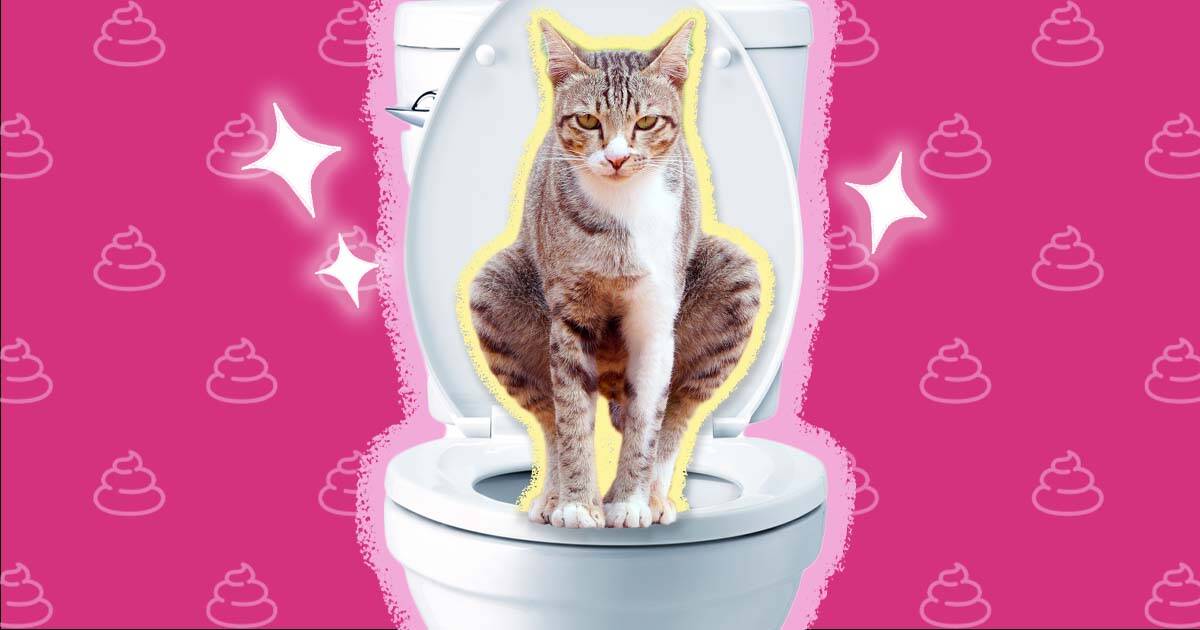Potential Risks of Flushing Cat Poop Down Your Toilet - Tips for Safer Handling
Potential Risks of Flushing Cat Poop Down Your Toilet - Tips for Safer Handling
Blog Article
What are your ideas regarding Can You Flush Cat Poo or Litter Down the Toilet??

Intro
As feline proprietors, it's important to be mindful of just how we get rid of our feline friends' waste. While it may appear practical to purge cat poop down the commode, this practice can have damaging consequences for both the atmosphere and human wellness.
Environmental Impact
Flushing cat poop introduces dangerous pathogens and parasites into the water system, posturing a significant risk to aquatic environments. These pollutants can adversely affect aquatic life and concession water quality.
Wellness Risks
Along with environmental problems, purging cat waste can additionally present wellness risks to human beings. Feline feces may consist of Toxoplasma gondii, a bloodsucker that can trigger toxoplasmosis-- a potentially extreme illness, particularly for expectant females and people with damaged body immune systems.
Alternatives to Flushing
Fortunately, there are safer and a lot more liable ways to get rid of cat poop. Think about the following options:
1. Scoop and Dispose in Trash
The most typical method of taking care of feline poop is to scoop it right into a biodegradable bag and throw it in the trash. Make certain to make use of a dedicated trash inside story and throw away the waste without delay.
2. Use Biodegradable Litter
Opt for eco-friendly pet cat clutter made from materials such as corn or wheat. These litters are environmentally friendly and can be securely thrown away in the garbage.
3. Hide in the Yard
If you have a backyard, consider burying feline waste in a marked area far from veggie yards and water resources. Be sure to dig deep adequate to avoid contamination of groundwater.
4. Install a Pet Waste Disposal System
Purchase a family pet garbage disposal system especially designed for feline waste. These systems use enzymes to break down the waste, reducing odor and ecological impact.
Verdict
Liable pet dog ownership expands past offering food and sanctuary-- it also entails proper waste administration. By avoiding flushing feline poop down the commode and choosing different disposal methods, we can reduce our ecological impact and protect human health and wellness.
Why Can’t I Flush Cat Poop?
It Spreads a Parasite
Cats are frequently infected with a parasite called toxoplasma gondii. The parasite causes an infection called toxoplasmosis. It is usually harmless to cats. The parasite only uses cat poop as a host for its eggs. Otherwise, the cat’s immune system usually keeps the infection at low enough levels to maintain its own health. But it does not stop the develop of eggs. These eggs are tiny and surprisingly tough. They may survive for a year before they begin to grow. But that’s the problem.
Our wastewater system is not designed to deal with toxoplasmosis eggs. Instead, most eggs will flush from your toilet into sewers and wastewater management plants. After the sewage is treated for many other harmful things in it, it is typically released into local rivers, lakes, or oceans. Here, the toxoplasmosis eggs can find new hosts, including starfish, crabs, otters, and many other wildlife. For many, this is a significant risk to their health. Toxoplasmosis can also end up infecting water sources that are important for agriculture, which means our deer, pigs, and sheep can get infected too.
Is There Risk to Humans?
There can be a risk to human life from flushing cat poop down the toilet. If you do so, the parasites from your cat’s poop can end up in shellfish, game animals, or livestock. If this meat is then served raw or undercooked, the people who eat it can get sick.
In fact, according to the CDC, 40 million people in the United States are infected with toxoplasma gondii. They get it from exposure to infected seafood, or from some kind of cat poop contamination, like drinking from a stream that is contaminated or touching anything that has come into contact with cat poop. That includes just cleaning a cat litter box.
Most people who get infected with these parasites will not develop any symptoms. However, for pregnant women or for those with compromised immune systems, the parasite can cause severe health problems.
How to Handle Cat Poop
The best way to handle cat poop is actually to clean the box more often. The eggs that the parasite sheds will not become active until one to five days after the cat poops. That means that if you clean daily, you’re much less likely to come into direct contact with infectious eggs.
That said, always dispose of cat poop in the garbage and not down the toilet. Wash your hands before and after you clean the litter box, and bring the bag of poop right outside to your garbage bins.
https://trenchlesssolutionsusa.com/why-cant-i-flush-cat-poop/

As an avid reader about How to Dispose of Cat Poop and Litter Without Plastic Bags, I imagined sharing that information was important. Loved our review? Please share it. Help somebody else locate it. Thanks a bunch for your time. Come back soon.
Prices & Booking Report this page